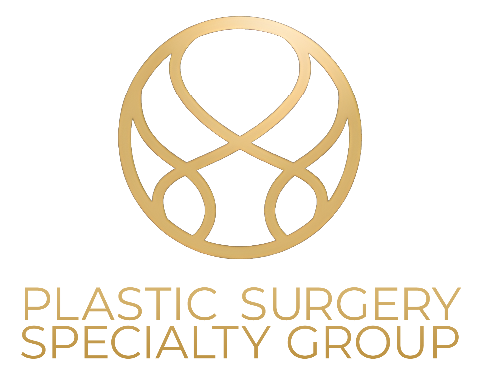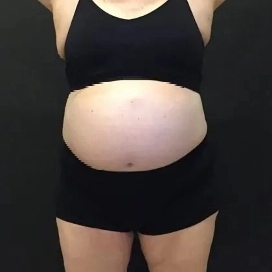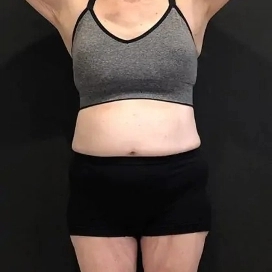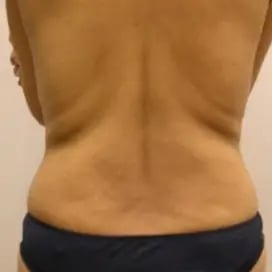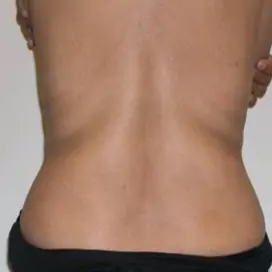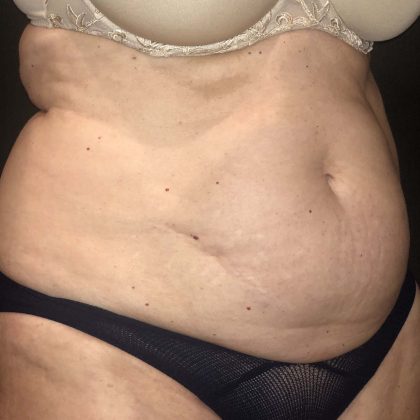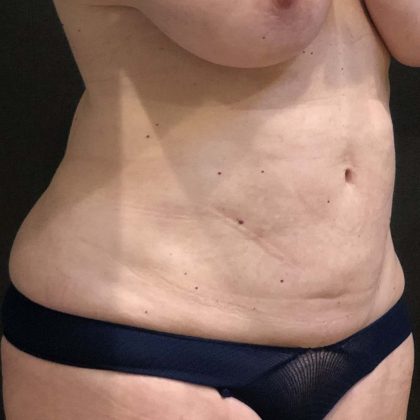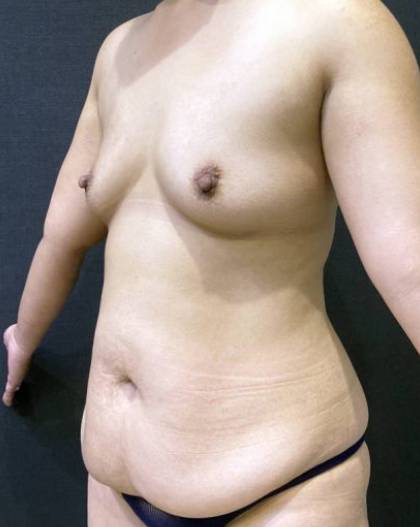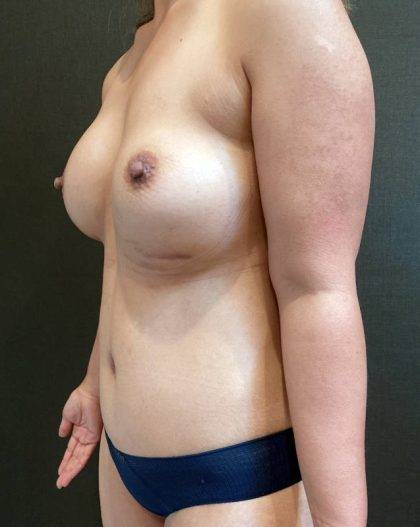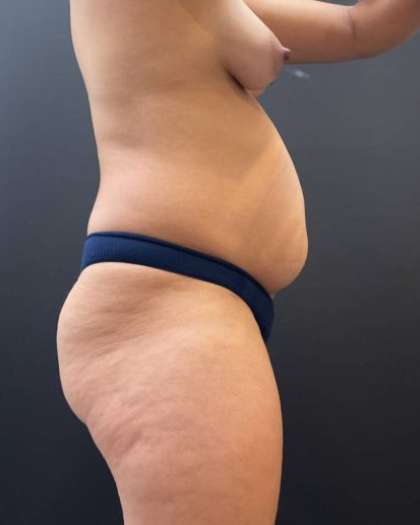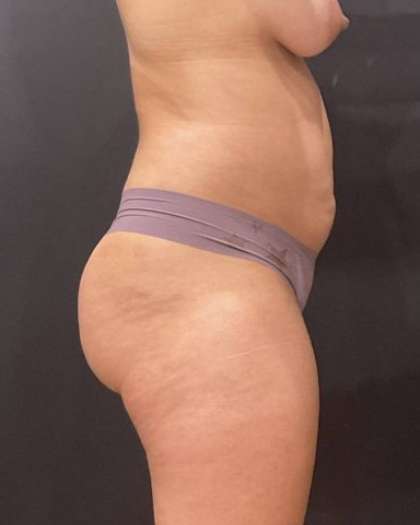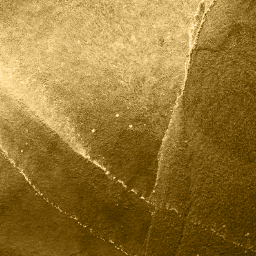Power-assisted liposuction, or PAL for short, is a liposuction technique that removes deep and superficial fat cells that diet and exercise alone are unable to resolve.(1) This liposuction technique utilizes a motorized cannula that gently vibrates back and forth to loosen fat tissue to be suctioned.(2) Power-assisted liposuction provides more thorough removal of fat cells. Its vibrating action accelerates the work of a surgeon in traditional lipoplasty, thus reducing the amount of force needed to remove fat and sculpt the treatment area. (2) As a result, the procedure is faster; a surgeon conserves energy and can work more efficiently; and recovery is quicker with less bruising and swelling. (2)
Whether it is your desire to fit into a favorite pair of skinny jeans, or wear a sleeveless shirt without “arm flab,” power-assisted liposuction can help you address bulges on an otherwise healthy frame. Our board-certified plastic surgeons and the team at Plastic Surgery Specialists aim to bring the aesthetic best out of our patients. We want to help you achieve effective results in alignment with your cosmetic goals. If you are ready to learn how power-assisted liposuction can trim, slim, and sculpt problem areas on your body, contact us today at our Bay Area office at (844) 951-5002.
About
Since the 1980s, liposuction has helped many women and men to eliminate localized fat deposits. Liposuction surgically removes subcutaneous fat, which is suctioned out by a cannula through small skin incisions. The procedure has grown to become one of the most frequently performed cosmetic procedures. Introduced in 1999, power-assisted liposuction (PAL) is a more advanced liposuction modality. PAL uses a powered wand that oscillates back and forth to break up excess fatty tissue for easier removal. The fat is then suctioned from the body. PAL is one of many modalities that have expanded our options for best results in liposuction. It can also be used in addition to VASER-assisted lipo or laser liposuction (SmartLipo) and PSS surgeons will endeavor to choose the modalities that will be most effective in an individual case.
PAL can be used on various regions of the body including the abdomen, love handles, thighs, upper arms, back, bra rolls, knees, ankles, and chin. The procedure will require the use of general anesthesia, and utilizes a tumescent fluid to ease the removal of the fat cells, and ensure the patient’s comfort and safety.
Traditional Liposuction vs. Power-Assisted Liposuction
In both traditional and power-assisted liposuction, a surgeon uses a cannula, or slender tube attached to a suction device. Traditional liposuction requires more physical exertion from the surgeon, who manipulates the cannula in a back-and-forth motion to break down the wall of fatty tissue and then suction away the loosened fat. Traditional liposuction requires a great deal of physical force, focus, and precision from a surgeon. Alternatively, power-assisted liposuction uses a motorized cannula that breaks down fatty tissue for easier removal. PAL reduces the amount of trauma to the surrounding tissues. It also avoids the risk of tissue burns that energy-based liposuction poses. PAL is 45% faster than traditional liposuction and results in less bruising and swelling during the patient recovery process. (2)
Before & After Photos
Before and After Photos
Benefits
Patients enjoy numerous benefits from power-assisted liposuction. The use of the motorized cannula allows the surgeon to achieve an improved outcome including more precise suction, easier contouring, and fewer complications.
Additional benefits of power-assisted liposuction include:
- Areas containing more fibrous, dense fat are easier to treat (3)
- Quicker fat aspiration rate (3)
- Beneficial in large-volume liposuction (3)
- Less bruising and swelling
- Safe, comfortable procedure
- Shorter recovery time
- Beneficial for revision liposuction (3)
- Less damage to the tissues surrounding fat cells
- Less time under anesthesia, and a lower risk of complications
Candidates
Candidates for power-assisted liposuction include those who:
- Have unwanted fat deposits that diet and exercise do not get rid of
- Are within 30% of your target weight
- Want more balanced proportions
- Have good skin elasticity and tone
- Require spot reduction to correct small irregularities from previous procedures
- Desire contouring for multiple areas of the body
You may not be a good candidate for power-assisted liposuction if you are a smoker or if you suffer from body dysmorphic disorder. Note that power-assisted liposuction is not a weight loss procedure. Instead, it is a cosmetic procedure meant to improve body contours for those of a healthy weight, who maintain a well-balanced exercise and diet regimen.
Personal Consultation
Since 2007, Plastic Surgery Specialists has grown into a team of three board-certified plastic surgeons and more than 20 staff members. Our surgeons provide sensitive, empathetic care coupled with highly-skilled attention to detail needed to help our patients achieve the body contours they desire. In a consultation, we will discuss your goals; problem areas on your body; and if you may be a good candidate for power-assisted liposuction. If you are ready to learn about how PAL can safely remove excess fat from your body with faster, gentler, and more refined results, contact our Bay Area office today at (844) 951-5002. Visit our blog to learn more about our work, including the results our procedures have helped our patients achieve.
Preparation
To prepare for power-assisted liposuction, patients should:
- Discuss medical history with your surgeon to determine if past or pre-existing conditions may complicate the procedure
- Undergo lab testing
- Adjust current medications as needed
- Stop smoking at least four weeks before the procedure
- Avoid alcohol 48 hours days before the procedure
- Avoid blood-thinning medications such as Advin, Mortin, and ibuprofen
- Avoid blood-thinning vitamins, supplements, and herbs like Vitamin E, ginkgo biloba, and St. John’s Wort
Procedure
Power-assisted liposuction can produce satisfying results with little to no risk. The PAL surgical procedure will last between one to three hours. PAL will be conducted using general anesthesia which induces temporary unconsciousness in the patient. The procedure for power-assisted liposuction will consist of the following steps:
- Tumescent solution: This solution will be injected into the areas receiving liposuction treatment. Tumescent solution contains both local anesthesia, saline, and epinephrine. Lidocaine, the local anesthesia, numbs the treatment regions while epinephrine constricts blood vessels to limit bleeding during the procedure. The saline causes subcutaneous fat tissue to stiffen and swell for easier access and removal.
- Incision: Your surgeon will make an incision at the surgical site(s) to allow for cannula insertion.
- Fat removal: The cannula will loosen and suction stubborn fat from adjacent tissues. The powerful vibration mechanism allows more gentle usage of the cannula when breaking apart fat deposits.
- Contouring: Remaining tissue is smoothed and contoured for a natural-looking appearance.
- Sutures: The cannula will then be removed and the surgical site sutured for healing and recovery.
After the procedure, you will be released to your pre-assigned caretaker to go home and begin your recovery. This person will need to drive you home, as you will be unable to drive yourself. Within one week, most patients can return to light activity.
Recovery
As you recover from power-assisted liposuction, you will generally experience less bruising than the traditional technique. You may also experience soreness and swelling. You will be given a compression garment to maintain your body’s new shape. Swelling can also be reduced with anti-inflammatory medications. Most patients return to light activity within one week. Your surgeon will remain on hand for follow-up appointments and additional help throughout the recovery process.
Results
Power-assisted liposuction creates effective results for men and women seeking fat removal in the abdomen, back, arms, or thighs. Results are often similar to or better than those from traditional liposuction. As you recover, you may notice immediate improvement in the next week or two, however, your final results will settle in after about six months, when you have completely healed. Fat removal from power-assisted liposuction is permanent and results in sleeker, firmer body contours.
Cost of PAL in the Bay Area
The cost of power-assisted liposuction will depend primarily on the areas treated. Other factors include the amount of fat being removed, and the extent of your procedure. You’ll be given an accurate estimate for the cost of your PAL procedure following your personal consultation. To get a preliminary estimate, contact us today.
FAQ
What are some of the risks
associated with liposuction?Like any surgical procedure, there are risks involved. Complications resulting from liposuction may include bleeding, infection, swelling, and pain. However, compared to other more invasive types of surgery, liposuction carries a lower risk profile. An experienced surgeon equipped with the proper tools will perform an effective procedure with rare occurrence of complications.
Which areas
can be treated with power-assisted liposuction?Common areas for treatment include the face, abdomen, hips, flanks (“love handles”), back, inner and outer thighs, knees, calves, ankles, and buttocks.
What is the procedure’s recovery time?
Recovery time will vary based on each person; the areas treated; and the extent of the treatment. Most people are able to work within one week and fully return to their daily lifestyle within two to three weeks.
References
- Bellini, E., Grieco, M.P., & Raposio, E. A journey through liposuction and liposculture: Review. Annals of Medicine and Surgery. (2017), 24:53-60. https://www.ncbi.nlm.nih.gov/pmc/articles/PMC5681335/.
- Codazzi, D., Bruschi, S., Robotti, E., & Bocchiotti, M.A. Power-Assisted Liposuction (P.A.L.) Fat Harvesting for Lipofilling: The Trap Device. (2015). World Journal Of Plastic Surgery. 4(2): 177-9. https://www.ncbi.nlm.nih.gov/pmc/articles/PMC4537612/.
- Tabbal, G.N., Ahmad, J., Lista, F., & Rohrich, R.J. Advances in liposuction: five key principles with emphasis on patient safety and outcomes. (2013). Plastic and Reconstructive Surgery Global Open. 1(8):e75. https://www.ncbi.nlm.nih.gov/pmc/articles/PMC4186292/.

